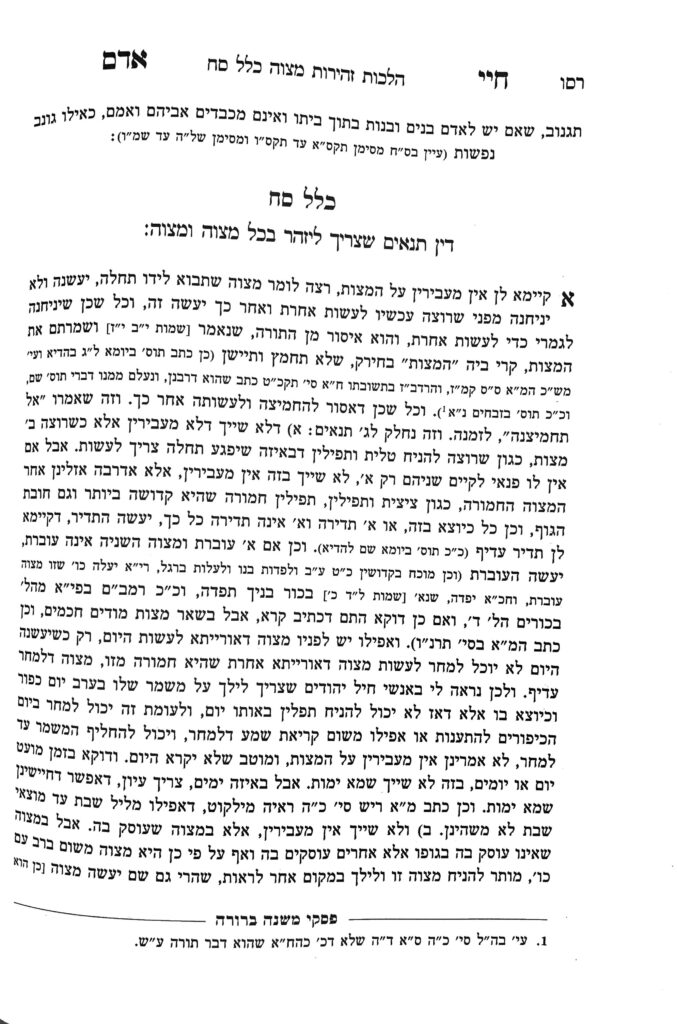1We are continuing in siman 1. We are beginning the second limitation to the concept of ain ma’avirin.
The Chayei Adam writes that ain ma’avirin only applies to a mitzvah in which one is actively involved. If someone else is involved in the mitzvah, and you are just a spectator, even though your presence increases the mitzvah due to the concept of b’rov am hadras melech, ain ma’avirin does not apply. Therefore, one is allowed to leave mitzvah A, in which one is a spectator, to go to mitzvah B, in which one is a spectator as well.
The source for this halacha is a Gemara in Yoma. The Gemaras says that a person who was watching the korbanos of Yom Kippur being burnt outside of the Beis Hamikdash could not witness the Kohen Gadol laining from the Torah, because the distance between them made it impossible. The Gemara infers that if not for the distance, it would be muttar to leave one and go to the other, and there is no concern of ain ma’avirin. Rashi explains that although the concept of b’rov am applies to the spectators, the rule of ain ma’a’virin does not.
This halacha rarely applies, as generally, when a person is listening to laining, he is being yotzei through shomeiah k’oneh, so he is considered as having active involvement in the mitzvah through the person laining. Theoretically, this halacha’s application to laining may be dependent on whether kriyas hatorah is considered a chovas yachid (obligation upon every individual), in which case this halacha would not apply to laining, or a chovas tzibur (obligation upon the community), in which laining would be similar to the situation in the Beis Hamikdash, and this limitation on ain ma’avirin would apply. The nature of the chiyuv to hear kriyas hatorah is a machlokes, and the Mishnah Berurah concludes that one is not chayav as an individual to hear the public laining, but once one is part of the tzibbur, they now have an individual chiyuv. Thus, this limitation of ain ma’avirin does not apply to krias hatorah, as one is being yotzei as an active participant through shomeiah k’oneh. (There is discussion as to why the avodah on Yom Kippur was different, but is beyond our current learning.)
Summary
There are three limitations to the application of ain ma’avirin:
If one is only able to fulfill one of the mitzvos
If the person is not an active participant in the current mitzvah, but only a spectator. Although there is a concept of b’rov am, the concept of ain ma’avirin does not apply.



